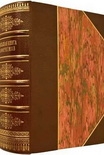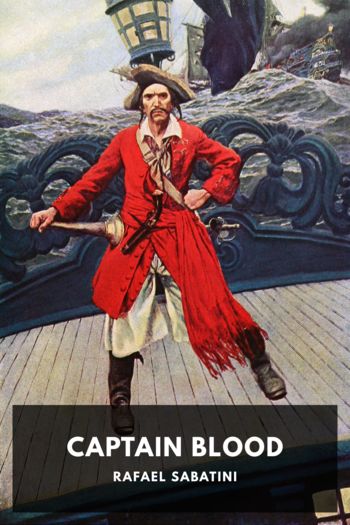Lemuria by Burt Clinchandhill (epub e ink reader TXT) 📕

Read free book «Lemuria by Burt Clinchandhill (epub e ink reader TXT) 📕» - read online or download for free at americanlibrarybooks.com
- Author: Burt Clinchandhill
Read book online «Lemuria by Burt Clinchandhill (epub e ink reader TXT) 📕». Author - Burt Clinchandhill
“Hello, Mr. F? Yes, it’s me. We’ve arrived at the museum.”
For a moment, he listened to the voice on the other end before answering. “I don’t think so, sir. They are just searching for something... What, no... I’m waiting by the car....”
The voice on the line grew louder.
“Yes, but... No, I understand... You’re the boss. I’ll try to find out more... Thank you, sir. I’ll keep you informed.”
The driver heard three short beeps as the call was disconnected, and he turned the phone off again, sighing.
After following the path for about fifty feet, the trio reached a small square.
“There.” Lindsey pointed to the right. On the other side of the square, a sign in huge fire red letters read: MUSEUM TRINIL, NGAWI.
“So far, so good,” Ignatowski remarked, while they walked up to the sign. Behind the stairs, a twenty-foot tall sculpture of an Indonesian temple marked the entrance. It was split in half, allowing visitors to walk through. Immediately behind the gate was a full-sized mammoth with huge ten-foot tusks.
“Selamat Siang. Welcome, welcome,” sounded from behind the temple entrance where a tanned, middle-aged Indonesian man emerged. “Good day,” the man said in remarkably good English. “I’ve been expecting you. Come, come.” He waved his arms to a small terrace. They followed him to a white plastic table with an orange-flowered tablecloth and plastic chairs. “My name is Kuwan Mansoer. Please sit down. I’m the curator of our lovely Trinil Museum.”
“Nice to meet you.” Bishop shook his hand, and the others introduced themselves.
“Can I get you some coffee, tea or something else?” Mansoer asked as a young woman joined them.
“Yes, coffee, please.” Lindsey folded her hands, begging.
The others nodded.
“Three coffees, it is. Tiga kopi,” he spoke to the young woman, who gave a small bow and left. “So, I understand you’re here searching for something? Some kind of investigation, yes? Maybe I can help. What are you looking for?”
They looked at each other, all three frowning.
“You know”—Bishop chewed his lips—“that’s probably an excellent question, which we are trying to answer ourselves right at this moment. If you give us some time to think and drink our coffee, maybe then you can help us.”
“Not a problem,” Mansoer replied.
The young woman carried a tray to their table.
Mansoer distributed the drinks on the table. “Milk, sugar.” He placed two Chinese porcelain cups on the table. “There you go. I’ll check up on you when you finish your coffee. You’re the only visitors today, so I’ve got all the time we need. I’ll be over there if you need me,” he said, pointing to the small bar.
“Thank you,” they said simultaneously.
“That’s a nice man,” Lindsey said. “And eager to help.”
“Indeed.” Bishop looked around the empty terrain. “From the looks of it, they don’t get many visitors, so I figure he’s most eager to help.”
Lindsey took a sip of her coffee. “Wonderful.”
“Yes, very good,” Bishop agreed. “Would now be a good time to continue your story about Jennifer?”
“Ah, yes,” Lindsey agreed. “Well, let me think about where to start. Okay, did you ever hear of race-based medicine?”
Bishop frowned, thought for a moment, and shook his head.
“I know, of course, there’s an evident controversy with using race as a method for classifying humans, and I know about your problems with that. But hear me out, please. I’m not a specialist and, Iggy, please help me if I get it wrong. Experts seem to think that thousands of genes that, if mutated, are responsible for human genetic diseases. Those genes seem to mutate differently in different regions of the world. For example, Cystic fibrosis is most common among people of Northern European heritage, Sickle cell anemia is mostly found in people with sub-Saharan African ancestry and Tay–Sachs disease, an autosomal recessive disorder, is most common among Ashkenazi Jews, French Canadians of Saguenay–Lac-Saint-Jean, the Old Order Amish of Pennsylvania and the Cajuns of Louisiana. I’ve been told there are a thousand more examples.”
Bishop thought for a long moment. “Okay, all true, I guess, but that could just as easily be explained by heredities as by classification through race. Where are you going with this, and what does this have to do with Jennifer?”
“All right.” Lindsey nodded. “You know we told you nobody had seen Jennifer for months when we started looking for her.”
“I know.”
“Shortly before her disappearance, Jennifer gave a presentation on an introduction day at Yale when, near the end, she collapsed and was brought to the hospital.”
“What?” Bishop almost popped a vein. “Why didn’t you tell me?”
“Because we thought you wouldn’t want to help us with finding out what happened to the missing tribes, but instead stay in the U.S. to look for Jennifer.”
“You’re damn right I would have.” Bishop slapped two hands on the table, shaking his head.
“Matthew, please listen,” Ignatowski pleaded. “I’m convinced that if we find the truth about the tribes, we will also find the truth about Jennifer.”
“And Jennifer herself,” Lindsey added.
Bishop took a moment to calm down. “Did you contact her mother? And I still don’t get where you’re going with your racial genetics story.”
“Yes, we contacted her mother,” Lindsey replied. “And she told us that Jennifer was taken to Yale hospital after her collapse, and then taken to Massachusetts General for specialized treatment.”
“What did she have?”
“She had an infectious brain disease. Her mother didn’t know much specifics, and when we queried the hospital, there was no record of her ever being treated there. Her mother did remember the name of the treating physician, but when we got there to question him, he didn’t work there and, according to the records, never did. We haven’t been able to locate him.”
Bishop’s eyes widened. “This is getting weirder and weirder.”
“Wait for it,” Lindsey added. “You know that when we were in Peru the first time, we took blood samples from the three natives. Those blood samples were tested on all kinds of abnormalities by ‘health and race’ specialists.”
“And





Comments (0)